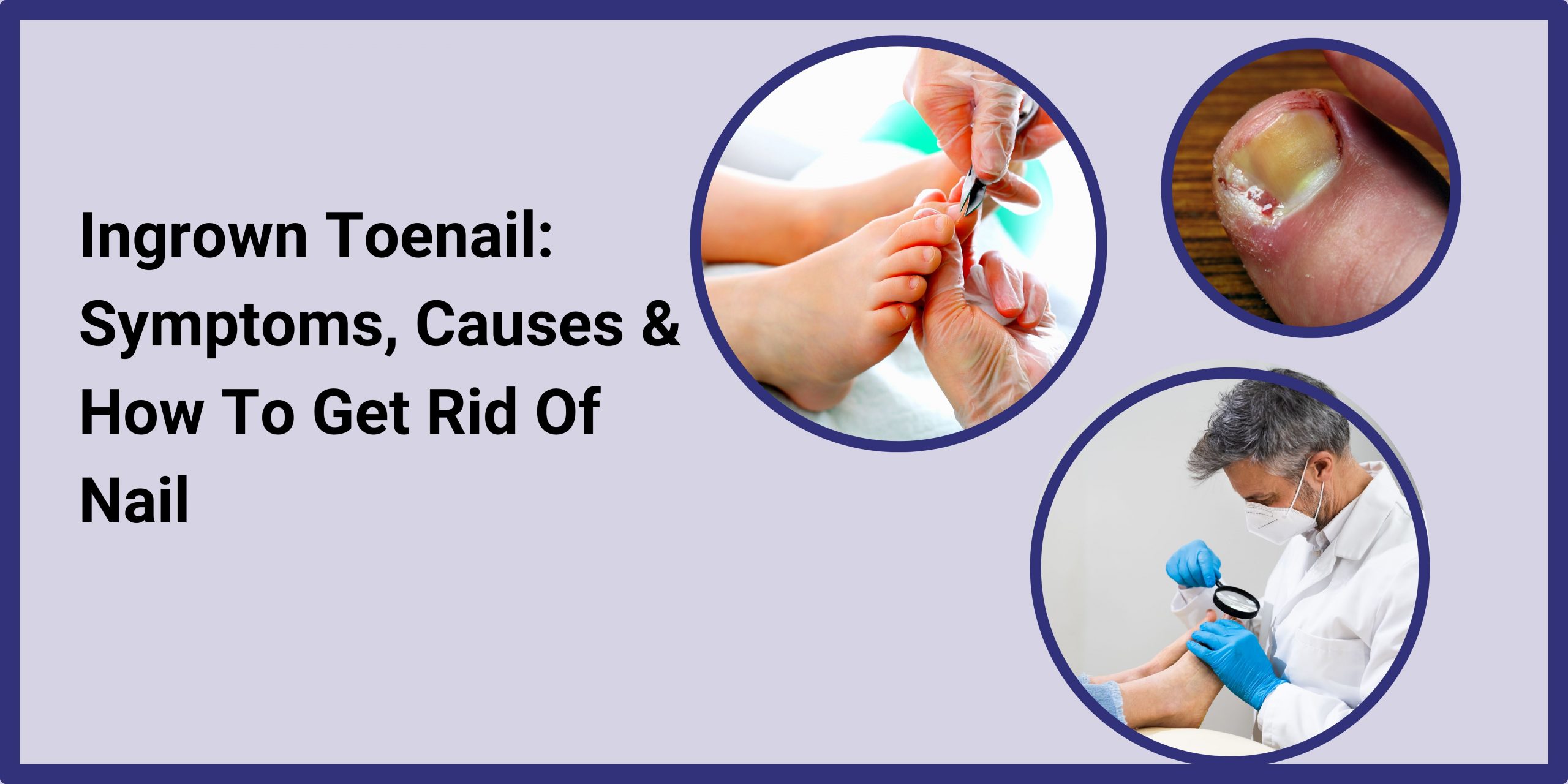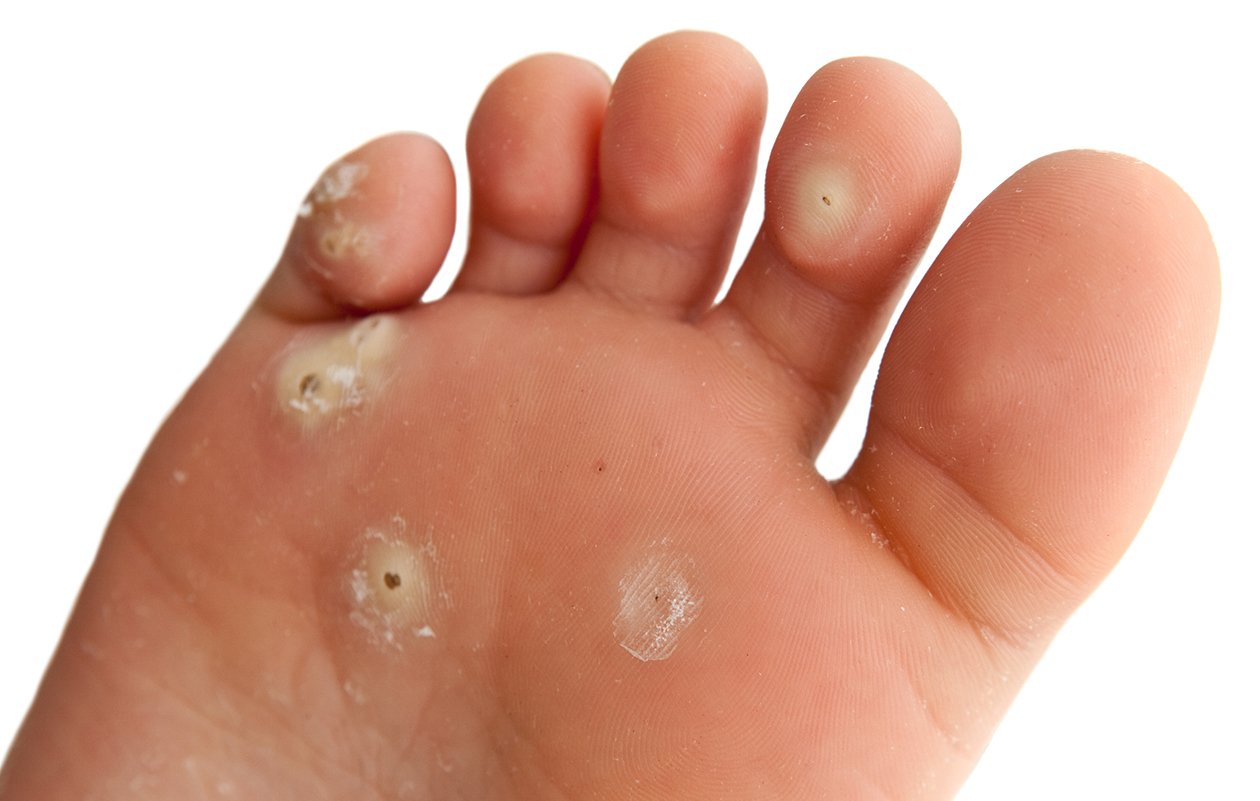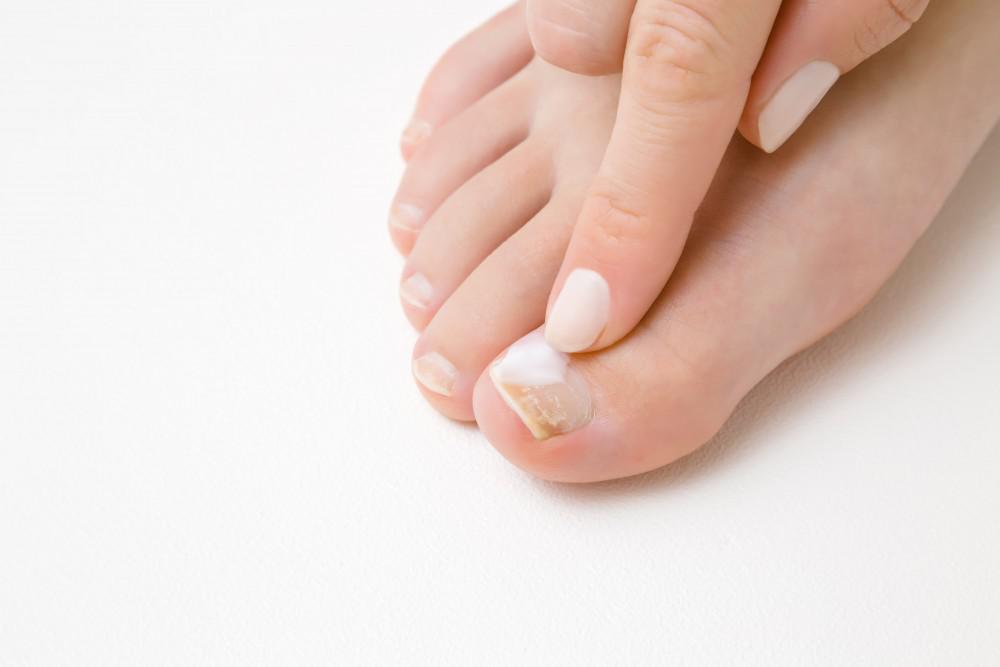
Ingrown Toenail
A frequent condition known as an ingrown toenail occurs when the corner or side of the toenail grows into the tender flesh. As a result, there is discomfort, swollen, irritated skin, and occasionally an infection. The big toe is typically affected by ingrown toenails.
Ingrown toenails are frequently treatable by yourself. Your healthcare practitioner can help you reduce your discomfort and prevent ingrown toenail issues if the pain is severe or spreading.
You are more likely to experience ingrown toenail issues if you have diabetes or another condition that reduces the blood supply to your feet.
In this blog, we’ll take a deeper look into ingrown toenail symptoms, causes, prevention, and how to get rid od nail infections. Read on to learn more.
Ingrown Toenail Symptoms
Some prominent ingrown toenail symptoms are:
- Tenderness and pain
- Inflamemation of skin around the affected area
- Swelling in the region
- Nail infection
What Causes Ingrown Toenails?
Ingrown toenails are commonly caused by:
- Wearing tight shoes, or shoes that don’t fit right. Especially in the toe region.
- Cutting toenails wrong (i.e. too deep, jagged, not straight across)
- Injury to the toenail
- Having naturally curved toenails
- Nail infections
- Certain medical conditions
Am I Susceptible To Ingrown Toenails?
There are several factors that increase your risk of developing ingrown toenails, such as:
- Having very sweaty feet. This softens the nail and skin around the nail, increasing your risk of ingrown toenails.
- If you cut your nails too short or round the corners too much, you are promoting nail growth into the skin.
- Poor nail and foot care practices.
- Footwear that constricts the toes.
- Taking part in activities that put your toes at risk, such as running and kicking.
- Insufficiency of blood flow caused by a condition such as diabetes.
Ingrown Toenails Prevention
- Trim your nails straight across. Never shape your nails to resemble the front of your toe. Ask the person giving you a pedicure to cut your nails straight across. Visit a podiatrist periodically to have your nails cut if you suffer from a condition that prevents enough blood flow to your feet and you are unable to trim your nails.
- Maintain average length toenails. Ensure that your toenails are cut so that the tips of your toes are in line. The pressure from your shoes on your toes may cause a nail to grow into the tissue if you cut your toenails too short.
- Don’t forget to wear the right shoes. A nail may grow into nearby tissue if your shoes are excessively tight or press against your toes. You might not be able to tell whether your shoes are excessively tight if you have nerve damage in your feet.
- Make use of protective footwear. Wear protective shoes, such as steel-toed shoes, if your activities put you in danger of toe injuries.
- Examine your feet regularly. Check your feet every day for indications of ingrown toenails or other foot issues. Especially if you have diabetes or other similar issues that affect circulation.
If you notice the first signs and symptoms listed above, don’t panic! There are a few home remedies you can use for minor infections. Here they are:
– Snakeroot Extract: Sometimes the best solutions are found in nature. The extract of this antifungal plant can be used to treat fungal nail infections, and has proved to be as effective as ciclopirox, a drug-store anti-fungal treatment.
– Ozone Oils: Oils like sunflower oil and olive oil are oils that contain the same gasses that exist in the ozone layer. Many studies have been conducted that have concluded that these “ozonized” oils are effective when it comes to treating nail fungus and may just be the best home remedy on how to get rid of a nail infection. In fact, a study took place in which sunflower oil had higher clinical effects than a common antifungal medication called ketoconazole.
– Oregano Oil: Another proof of the effectiveness of nature is oregano oil. It contains “thymol”, a naturally occurring phenol that is said to have antifungal properties. In treatments, this oil is also combined with tea tree oil, but this increases the risk of negative side effects, irritation, and allergic reaction.
– VapoRub: Though commonly used to treat colds and coughs, vicks vaporub has proved itself beneficial in treating fungal nail infections, in a study done in 2011.
If your infection has more serious symptoms, or persists after taking the above measures, visit a podiatrist immediately.
Conclusion
Though the above home remedies help fight minor infections, they aren’t as effective as visiting a podiatrist. A podiatrist will be able to tackle the infection and help you prevent it from recurring. If you think you may be suffering from an ingrown toenail infection and want to know how to get rid of your nail infection, book an appointment with us! We’ll be able to help you with all your podiatric needs.




Recent Comments